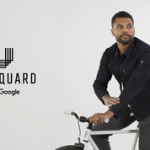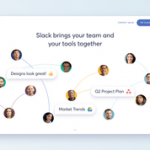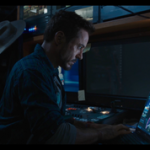We recently sat down with Dmitry Tsozik, Design Director and co-founder of Clay Global, a UI/UX design and development agency. Clay creates digital products that people love to use by applying behavioral science to customer experience and human-centered enterprise software.
AIGA SF:Thanks for sitting down with us today, maybe you can start by telling our readers a little about yourself?
Dmitry Tsozik: I'm currently based in San Francisco but for the first 16 years of my life I lived with my family in a tiny Siberian town, but since then I’ve been on the move. In 2009 I moved to the beautiful city of Saint Petersburg, Russia, to work as a designer at SoftFacade — a small design agency where I was employee #2. Eventually, SoftFacade was renamed SFCD when we moved to New York City, and after three years there we decided to open a new agency in San Francisco — Clay — that I run together with my business partner and good friend Anton Zykin.



At Clay, I’m pretty much responsible for the quality of our design, for our brand, and have been lucky enough to work with clients like Google, Uber, Facebook, Slack, Coca-Cola, among others, on bringing new ideas to life.



These days I spend most of my time running the design team, meeting and collaborating with clients, as well as working on new concepts and creative ways to tell the world about our team and what we do — for example, we recently launched our first design video reel showcasing highlights of some recent projects — check it out.
AIGA SF: Your work often blends design and usability in a way that transcends “boring” enterprise software, such as payroll management. Can you talk about why it’s important to you to make consumer-grade enterprise software?
Dmitry Tsozik: That’s right. After years of working on engaging, sleek, super-polished consumer apps, we discovered a lot of tools, techniques, and methodologies that are used by apps like social networks, mobile video games, and the most popular online services to hook you and make you return to their products again and again. We realized that we could make a huge positive impact on the real everyday lives of millions of people if we use some of these techniques to build software that people actually have to use daily — all kinds of office and educational apps, HCM, CRM and science lab management apps, healthcare and clinical studies software, analytical and financial tools, apps for older people and people with disabilities, trading and b2b software — by redesigning boring, mundane and sometimes stressful experiences into something that people may actually like to use. I’m not talking about adding a ton of animations and gradients everywhere — sometimes just fixing obvious navigation and basic usability mistakes is enough to remove a lot of pain points and everyday struggle. Which in turn, can help reduce the cost of education for new employees and make daily routines faster. We believe that simple and intuitive working tools are a basic human need, and everyone should have access to good design, not just rich millennials looking for the next piece of entertainment. I totally support the idea of having usability standards that software has to follow if your employees have to use it — on par with any work conditions standards and other required job benefits.
AIGA SF: You think designers can do a lot more with mobile technology—in fact, you created 3 seconds of the Iron Man 3 movie on your mobile phone. Can you talk about some of the innovative potentials of mobile and how it’s part of how you approach design?
Dmitry Tsozik: Ok, just to be clear — with the Iron Man 3 project I didn’t want to use anything but the most powerful Mac Pro for the task, obviously, but the last piece of feedback from Marvel’s VFX team came in on Saturday, and I was in a cab already going to JFK airport for a flight I couldn’t cancel. So what I decided to do was remotely log in with my iPhone to my Mac, and on the tiny iPhone 5 screen I had to open the project — remotely by a cellular network — and in a moving cab was making the final changes to the video file with my finger on the phone’s screen, setting up the project to render into a Dropbox folder, and after I hit the ‘Render’ button — nervously updating the Dropbox folder every three seconds on my phone all the way till the last moment before the flight. But all this eventually worked out!

Of course, modern mobile devices and internet speeds are even further ahead, and now you actually can do some 3D and video work on your phone, but the main thing for me is all the new ways we think about and work with our digital stuff. Moving from files and commands towards objects in AR, computer vision and conversational UI brings a ton of new interaction models, can simplify routines and help more people — older generations, little kids, users with vision loss — be more active in the digital space.
Speaking of mobile design — we always try to free our users from unnecessary manual work and mental load, and today apps can predict your behavior even better, be proactive with smart suggestions, and in general, we are moving from just searching for information to accessing digital wisdom.
AIGA SF: You’re well known for your iconography design, but you’re also thinking about the entire brand experience. How do you get from an icon to an immersive experience?
Dmitry Tsozik: Yes, we got quite a following for our detailed iconography work back in the day, but the truth is we’ve always been busy with projects that encompass the full range of user/customer experience design — including the brand identity of digital products. And I’m saying this because today, in the digital world, you may have the most beautiful logo, but your users won’t really care about it — what people care about is their experience with your product. So on par with usability, stability, and how your product works — we have to take care of how your product feels — that’s what people are going to remember and associate with your product and ultimately with your brand. So when we work on branding for digital products, we not only define logotypes, typography, and colors, we need to think about all the pieces of digital facades — iconography, for sure, but also the pace and flow of all interactions, elements of design that provide an invisible guidance for users, and special moments of delight that we tie with the most important parts of experience — so as our client you are in control of what and how people are going to think and remember about your product and your brand. We believe that today user experience is a part of a brand — an even more important one compared to traditional elements like logotypes and app icons.
AIGA SF: Lastly, what tool or new product are you excited about right now?
Dmitry Tsozik: I love what’s currently going on with iOS apps, especially on the iPad — since its form factor is closer to traditional desktop computers, but with many apps, User Experience Design is on a different level completely. You may find professional apps for 3D modeling, video production, music creation — and so on — designed and developed with all the fine details you may expect from a modern iPhone app. As you may have heard, in a couple of years we’ll be running iOS apps on our desktop Macs, and I very much welcome the fresh approach we may see in a somewhat stale market of desktop apps.
Speaking of professional design tools — I’m a big fan of everything that brings UI design and front-end development closer, especially Framer and similar tools. On a slightly side note — there’s a new video-game engine and creation suite coming out this spring — Dreams on PlayStation4 — and it is a very unique take on new ways to create interactive experiences and a great collection of fresh UX ideas on its own.
Find out more about the work Dmitry does at Clay Global on their website.
